RF Microneedling: Benefits, Procedure, And Alternatives
Explore the pros and cons of RF microneedling in the pursuit of smooth, blemish-free skin.
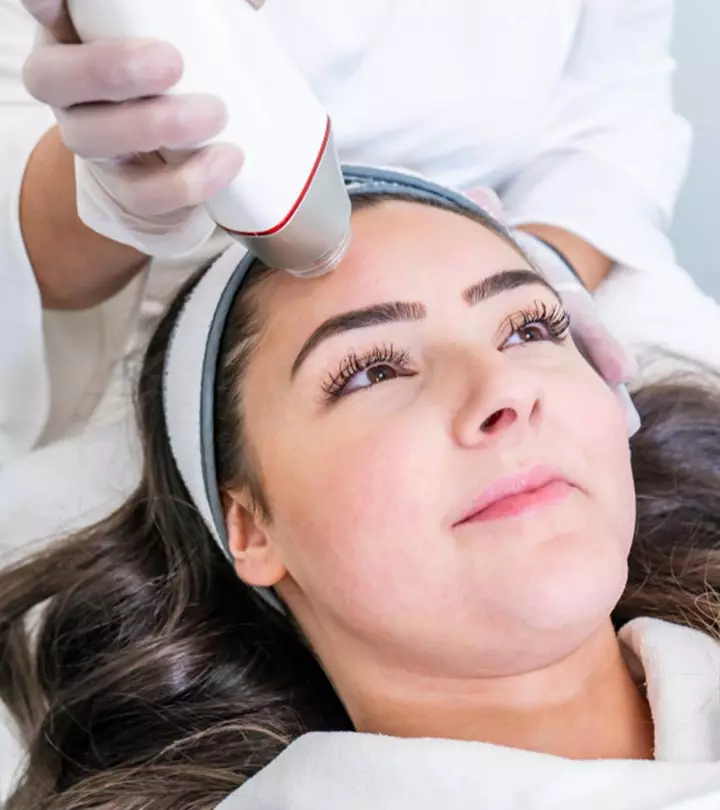
Image: Shutterstock
The skin care industry is continually developing new techniques to address common skin disorders such as sagging skin, wrinkled skin, scarring, and discoloration. Radiofrequency microneedling, also known as RF microneedling, is one of the most recent technologies that provide people worldwide with clear, scar-free skin.
RF microneedling is being hailed as a new skin care therapy that can help with various issues. Are you interested in learning more about RF microneedling and the benefits it can provide? This comprehensive guide will address all of your questions concerning RF treatment. Keep reading!
In This Article
What Is RF Microneedling?
RF microneedling is a cosmetic procedure that leverages the skin’s ability to heal itself. It is a non-invasive treatment that combines radiofrequency energy with the collagen-inducing effect of microneedling (1).
Your skin is constantly adapting to the conditions to which you expose it. While it can recover to a certain extent from the damage, at times, the rate at which your skin repairs itself is not enough. When this happens, you need to encourage your skin to speed up its healing process.
With RF microneedling, you are essentially damaging your skin at a microscopic level. The damage stimulates the skin to produce more collagen and replace the tissue. And, voila! You get a new skin that is smoother and free from blemishes. Radiofrequency microneedling is an extremely beneficial treatment that can prove to be the answer to many skin issues.
Let us get into a more in-depth understanding below!
Key Takeaways
- RF microneedling or radiofrequency microneedling is a non-invasive and non-surgical treatment that involves damaging the skin at a microscopic level.
- The damage stimulates the skin to produce more collagen, replace the lost tissue, and thus result in new skin that is smoother and free of blemishes.
- This procedure is useful for wrinkle removal, eliminating acne scars, addressing deep skin issues, tightening loose skin, and regulating sweating.
What Does RF Microneedling Do?
To understand the working of microneedling and RF treatment together and how they deliver the desired results, one has to understand how the skin heals itself. RF microneedling rejuvenates your skin by forcing it to make more collagen and elastin. It does so using a two-pronged approach, which is as follows:
1. Microneedling
Microneedling devices create small injuries on your skin. The injuries are evenly spaced. These injuries are microscopic, with an average depth of 0.5 to 3.5 mm, and not visible to the naked eye. However, your body does feel these injuries, and it initiates the healing process. In response, your body produces more collagen and elastin to heal the wound.
These molecules are produced regularly by your body to maintain your skin and help it heal from regular wear and tear. However, with increasing age, the amount of collagen and elastin that the body produces starts reducing. This leads to sagging, fine lines, and wrinkles. In case of severe acne inflammation, the underlying collagen and elastin are damaged, leading to pits and scars. The microneedling procedure induces a fresh dose of collagen and elastin. These molecules repair the scars by filling them from within. They also make the skin tighter and more youthful (2).
2. RF Treatment
The needles used for microneedling reach the middle layer of your skin or the dermis. In RF microneedling, the needles also deliver a dose of radiofrequency energy straight to the dermis. The energy generates heat in the dermis. The heat causes the skin to tighten as the collagen fibers in the dermis contract. In addition to this, it further boosts collagen production in the dermis (3).
In essence, you are tricking your body into believing that it is injured to initiate the skin regeneration process. And, the introduction of radiofrequency increases the efficacy of the regular microneedling procedure.
Now, you must be curious about whether this treatment is worth it and what its benefits are. Let us check out the benefits of RF microneedling in the next section.
What Are The Benefits Of RF Microneedling?
RF microneedling offers a host of general benefits that make it the preferred treatment method for men and women of all ages.
- It is a non-invasive and non-surgical procedure. Mindy, a YouTuber, shared her experience with RF microneedling in her video. She said, “This procedure does not hurt remember I said we numbed it all the way and it does not hurt at all (i).” Mindy underwent four treatments in 2021, targeting fine lines, deep wrinkles, and scarring. She noted visible improvements and praised the technique for its skin-firming outcomes.
- The downtime after the procedure is very less. You can go back to your routine life within a day or so. Plus, it only requires 3-4 sittings, after which you can start seeing the results.
- It is more effective than traditional microneedling or RF treatment. Since it is a combination of both, it delivers the benefits of both microneedling and RF treatment.
- You can get RF microneedling treatment irrespective of your skin tone. There is no risk of burning or scarring.
- The risk of side effects is very low for the radiofrequency microneedling treatment.
In short, RF microneedling is one of the safest and most effective ways to get rid of skin imperfections. More importantly, you can enjoy the following evidence-backed benefits from the procedure:
1. Fades Acne Scars And Stretch Marks
A 2014 study published in the Journal of Cutaneous and Aesthetic Surgery discovered that RF microneedling reduced the visibility of acne scars in all 31 participants (4). While 29% of these showed minimal improvements, 58% showed moderate improvement, with 9% and 3% displaying good and very good improvements, respectively (4).
A similar discovery was made in a small study that found it to be efficient in reducing atrophic acne scars (5). The same principle also applies to stretch marks.
2. Rapid Skin Turnover
The primary science behind the process revolves around inflicting micro-injuries to the skin to stimulate the production of collagen and elastin to build a new layer of skin. Hence, it goes without saying that RF microneedling increases the skin cells turnover rate, blessing you with youthful and flawless skin. As a result, RF microneedling also improves skin texture, quality, and pore size (6).
3. Reverses The Signs Of Aging
RF microneedling can also reduce the signs of aging, such as fine lines, wrinkles, and loose skin (7). Studies have found RF microneedling to be more effective than botox injections for reducing wrinkles around the eyes. Moreover, the effect of RF microneedling also lasts longer (8).
4. Treats Hyperhidrosis
If you have hyperhidrosis, a condition that makes you sweat more, then radio frequency microneedling can come to your rescue. Pilot studies conducted in 2013 and 2019 indicate that RF microneedling can regulate sweating and even reduce the size or number of sweat glands (9), (10).
Are you curious to know if you can derive any or all of the benefits listed above? Read on to find out!
Who Can Do RF Microneedling?
A good candidate for RF microneedling is someone who wants to get rid of minor skin imperfections such as acne scars, loose skin, wrinkles, stretch marks, and enlarged pores.
You can get RF microneedling treatment irrespective of your skin type or color. Unlike certain other skin resurfacing treatments that are not effective on darker skin tones, anyone can benefit from RF microneedling.
However, you need to set realistic and attainable skin goals.
It is also worth noting that there are certain health conditions that prevent you from taking the radiofrequency microneedling treatment. Pregnancy, open wounds, and skin infections are a few of these conditions. You also cannot get RF treatment if you have cancer or are undergoing radiation therapy, have an autoimmune disease, or use a pacemaker or defibrillator.
Traditional Microneedling Vs. RF Microneedling: Which Is Better?
To understand the difference between traditional microneedling and RF microneedling, let us quickly recap what each of them means:
- Traditional Microneedling
Traditional microneedling involves the use of sterile needles that are rolled over the skin to create microscopic injuries in defined rows and columns. These punctures stimulate the skin’s natural healing process and trigger the release of proteins like elastin and collagen. The resultant new layer of the skin reduces any scarring, skin blemishes, or stretch marks (2).
- RF Microneedling
RF microneedling takes traditional microneedling one step ahead by incorporating a radio frequency component. Here, the RF microneedling devices use specialized needles that create micro punctures while also channeling radio frequency through them. This slight modification enhances the production of the desired proteins (elastin and collagen) and hyaluronic acid, all of which augment the ability of traditional microneedling. Furthermore, the radio frequency waves produce a heating effect that boosts skin tightening (3).
 Trivia
TriviaSo Which One Is Superior?
Given that RF microneedling combines the best of microneedling and radiofrequency treatment, it can singularly deliver dramatic results. The two complementary technologies boost each other’s effectiveness to deliver better results in the following areas:
- Wrinkle removal
- Eliminating acne scars
- Addressing deep skin issues
- Tightening loose skin
Moreover, RF microneedling devices are customizable with ample room to control puncture depth and RF energy intensity.
Hence, if you are given a choice between traditional microneedling and RF microneedling, the latter would be a better prospect.
Naturally, you must be wondering how the treatment plays out. Get an overview of the same in the next section.
What Can You Expect From RF Microneedling Treatment Procedure?
You will have to undergo at least 3 to 4 sessions of RF microneedling to see visible results. Each session lasts about 30 to 45 minutes, and here is what you will experience:
Before Your First RF Microneedling Session
As with all skin treatments, the process will begin with a dermatological assessment. Your cosmetologist will first take down your medical history and note down your skin goals. They will then take multiple photos of your skin to determine its condition and the best course of action to address the conditions. They may even give you a list of dos and don’ts to follow before you are ready for the actual procedure. Similarly, they may prescribe you antibiotics and medication to address issues related to acne breakouts, cold sores, etc.
During The Procedure
Once the preliminary assessment is over, you will then have to visit the skin care specialist to start the procedure. Here is what you can expect:
- The skin specialist will first clean your skin with a deep cleansing lotion.
- They will then apply a numbing cream.
- After making sure that your skin is numb, they will use the handheld microneedling device to stamp punctures across your face (or the targeted section of the skin).
- The device will also emit RF energy to deliver heat to your dermis and trigger the production of elastin, collagen, and hyaluronic acid.
- You may experience a warm, prickly sensation, but none of the pain due to the numbing cream.
- Once the entire skin surface is covered, the skin specialist will clean the region and apply a soothing lotion, balm, or mask.
The above steps outline the entire RF microneedling experience. But, what happens next? Read on to know more.
What Can You Expect After RF Microneedling Treatment?
Right after the process mentioned above, you may experience targeted pinpoint bleeding, slight swelling, redness, and flushing. However, it should not be a cause for concern, considering that it is a natural inflammatory response to the microscopic punctures made on your skin.
On average, these symptoms subside in about 24 to 48 hours. You can apply ice packs to reduce the swelling and alleviate the discomfort.
During the healing process, your dermatologist may recommend a specific skin care routine or prescribe some ointments, creams, or emollients. Ideally, you should use a gentle and healing cleanser, a deep skin moisturizer, and a mineral-based sunblock. You should apply a sunscreen of at least 30 SPF to protect your skin from the sun’s harmful rays that can otherwise irritate your skin.
Ideally, it would be best to stay away from the makeup of any kind to allow the puncture wounds to heal without any blockages. However, if it is absolutely necessary, apply makeup or follow your routine skin care regimen only after 24 hours have passed.
 Quick Tip
Quick TipNow let us look into how long the entire procedure lasts!
How Long Does RF Microneedling Procedure Last? And How Many Treatments Are Needed?
The number of treatments depends on your final skin goals and the present condition of your skin. Dermatologists typically recommend that you sign up for at least three sessions, each of 30 to 45 minutes each, for optimal results. Considering that the sessions are scheduled every 3 to 8 weeks, you will see the results in about 3 to 6 months time. However, this is just a standard time frame, and the actual results may vary depending on your skin condition and final goals.
The benefits of RF microneedling last about a year. However, you may need to visit your dermatologist for occasional touch-ups to maintain the results.
Considering that RF microneedling is not a one-off thing, one may have concerns regarding the safety of the procedure. Find out more in the next section.
Is Microneedling With Radiofrequency Safe? What Are Its Side Effects?
Given that RF microneedling is FDA-approved and is well-tolerated by most receivers, it is considered fairly safe. However, it does have some minor side effects such as (11):
- Redness
- Dryness
- Itching
- Scaling
- Mild acne flare-up
- Swelling
- Cold sore breakouts
- Scabbing
These side effects usually last up to a few hours but can stretch to even a few days.
That being said, if you notice any of the following side effects, you must stop the process and consult a doctor immediately (11):
- Allergic response to needles
- Persistent or recurring redness or swelling
- Signs of infection
- Sustained and prolonged bleeding
- Bruising
- Fatigue
- Nausea
- Headache
A few other drawbacks of RF microneedling include:
- You need to routinely follow up with regular sessions to see noticeable results.
- While numbing creams may reduce the pain, you are bound to experience discomfort as its effects wear off. This pain response can be worse if you have sensitive skin.
- RF microneedling poses a mild risk of hyperpigmentation in people with medium or darker skin tones.
- A botched-upRF microneedling procedure could worsen the skin problems that it promises to fix. As a result, you may be left with uneven skin tone and texture, visible pinpricks, and scars.
If RF microneedling is not for you, there must be other alternatives that offer the same results, right? Read on to know more.
What Are Some Alternatives To RF Microneedling?
The beauty industry is no stranger to minimally invasive skin rejuvenation techniques. If you are looking for alternatives to RF microneedling, you can consider:
- Laser resurfacing, which utilizes lasers to carry out controlled damage to the skin (12).
- Chemical peels exfoliate your skin with medical-grade exfoliating agents to improve skin cell turnover (13).
- Vampire facials augment the effect of microneedling with platelet-rich plasma (14).
RF microneedling is a cutting-edge skin treatment that combines the benefits of microneedling with radio-frequency technology to provide anti-aging benefits. The dynamic combination encourages tissue remodeling and promotes collagen formation. As a result, fine lines and wrinkles, skin elasticity, hyperpigmentation, skin texture and tone, stretch marks, cystic acne, and acne scars can be improved by RF microneedling. This procedure heals, remodels, and resurfaces the skin at a cellular level. Furthermore, RF microneedling devices are highly programmable, allowing for precise puncture depth and RF energy intensity control. It is also better than standard microneedling procedures.
Frequently Asked Questions
Does RF microneedling help jowls?
Yes. RF microneedling can help diminish the appearance of jowls by stimulating collagen production and tightening the skin.
Does skin peel after RF microneedling?
Yes. Due to increased cell turnover, your skin may peel for 3-5 days after microneedling.
Which is better, RF microneedling or microcurrent?
Both RF microneedling and microcurrent show similar skin tightening and brightening results. However, there is more research to back RF microneedling that works more effectively than microcurrent.
Can I wash my face after RF microneedling?
Yes. You can wash your face after RF microneedling. However, you should only use lukewarm water for up to 48 hours of the treatment and slowly shift to a gentle cleanser.
Which is better, microdermabrasion or RF microneedling?
It depends on your preference. For example, microdermabrasion is a safer procedure as it works on a superficial level, while RF microneedling is more effective.
Given that RF microneedling involves the insertion of needles into the skin’s surface, one has to be sure that the needles are sterilized periodically. Professional RF microneedling devices come with disposable tips or allow sterilization. However, at-home devices lack the same.
Additionally, the at-home RF microneedling devices are customized to be less penetrative or harmful to ensure safety. On the other hand, in a professional setting, the devices are more capable and feature-rich to offer deep-skin stimulation.
Learn about the reality behind radiofrequency microneedling! Watch this informative video to explore what this technique involves, its effectiveness level, and find out whether this treatment delivers on its promise of visible results. Click play to learn.
Personal Experience: Source
StyleCraze's articles are interwoven with authentic personal narratives that provide depth and resonance to our content. Below are the sources of the personal accounts referenced in this article.
(i) My RF Microneedling Experiencehttps://www.youtube.com/watch?v=lI_tqX4iTqY
References
Articles on StyleCraze are backed by verified information from peer-reviewed and academic research papers, reputed organizations, research institutions, and medical associations to ensure accuracy and relevance. Read our editorial policy to learn more.
- Microneedling: Advances and widening horizons
https://www.ncbi.nlm.nih.gov/pmc/articles/PMC4976400/ - Microneedling: A Review and Practical Guide
https://pubmed.ncbi.nlm.nih.gov/28796657/ - Radiofrequency facial rejuvenation: Evidence-based effect
https://www.ncbi.nlm.nih.gov/pmc/articles/PMC6541915/ - Evaluation of Microneedling Fractional Radiofrequency Device for Treatment of Acne Scars
https://www.ncbi.nlm.nih.gov/pmc/articles/PMC4134659/ - Treatment of Acne Scars on Darker Skin Types Using a Noninsulated Smooth Motion, Electronically Controlled Radiofrequency Microneedles Treatment System
https://pubmed.ncbi.nlm.nih.gov/28009691/ - Non-insulated Fractional Microneedle Radiofrequency Treatment with Smooth Motor Insertion for Reduction of Depressed Acne Scars, Pore Size, and Skin Texture Improvement
https://www.ncbi.nlm.nih.gov/pmc/articles/PMC6122511/ - Intramuscular Insertion of a Radiofrequency Microneedling Device for Facial Rejuvenation: A New Technique and Case Reports
https://academic.oup.com/asjopenforum/article/doi/10.1093/asjof/ojz035/5733650 - Comparison of Microneedle Fractional Radiofrequency Therapy with Intradermal Botulinum Toxin A Injection for Periorbital Rejuvenation
https://karger.com/DRM/article/doi/10.1159/000356162 - Efficacy of Fractional Microneedle Radiofrequency Device in the Treatment of Primary Axillary Hyperhidrosis: A Pilot Study
https://karger.com/DRM/article/doi/10.1159/000354602 - Pilot study for permanent resolution of axillary hyperhidrosis: elimination of sweat glands with intradermal microneedle radiofrequency
http://link.springer.com/10.1007/s00238-018-1470-8 - Microneedling Devices
https://www.fda.gov/medical-devices/aesthetic-cosmetic-devices/microneedling-devices - Ablative Laser Resurfacing
https://www.ucsfhealth.org/treatments/ablative-laser-resurfacing - A Practical Approach to Chemical Peels
https://www.ncbi.nlm.nih.gov/pmc/articles/PMC6122508/ - Problems and Solutions for Platelet-Rich Plasma in Facial Rejuvenation: A Systematic Review
https://pubmed.ncbi.nlm.nih.gov/30327852/
Read full bio of Dr. Preethi Nagaraj
Read full bio of Arshiya Syeda
Read full bio of Ramona Sinha
Read full bio of Swathi E






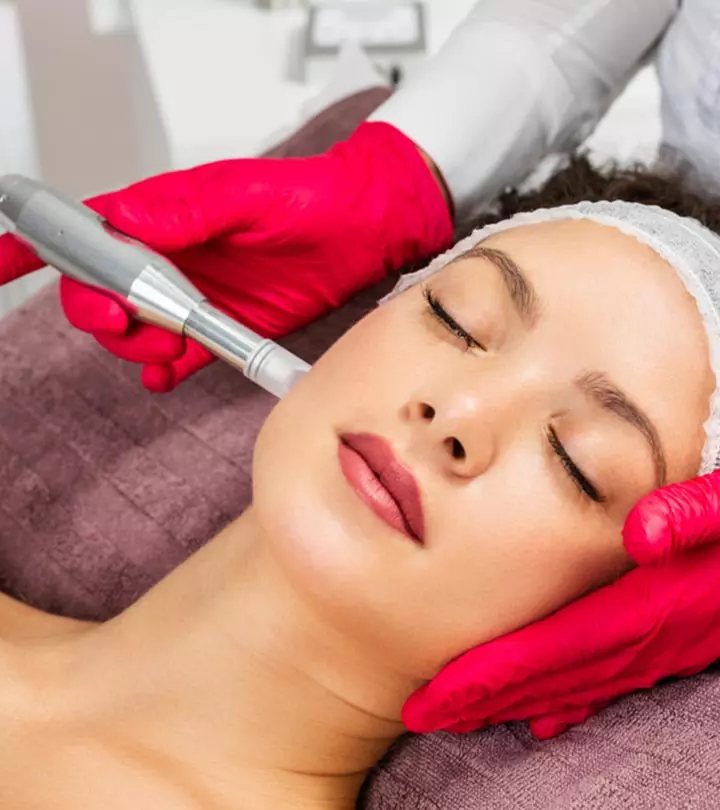
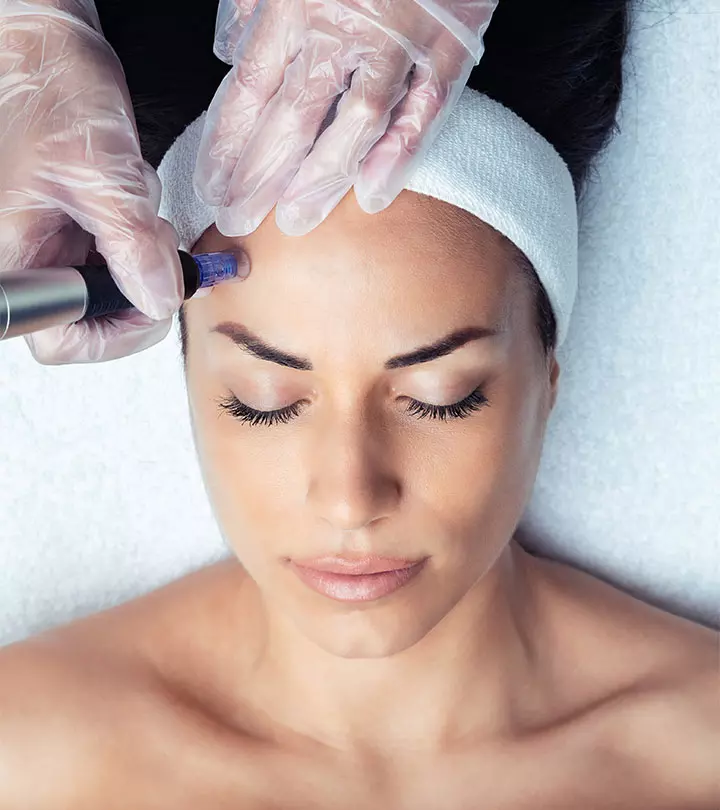
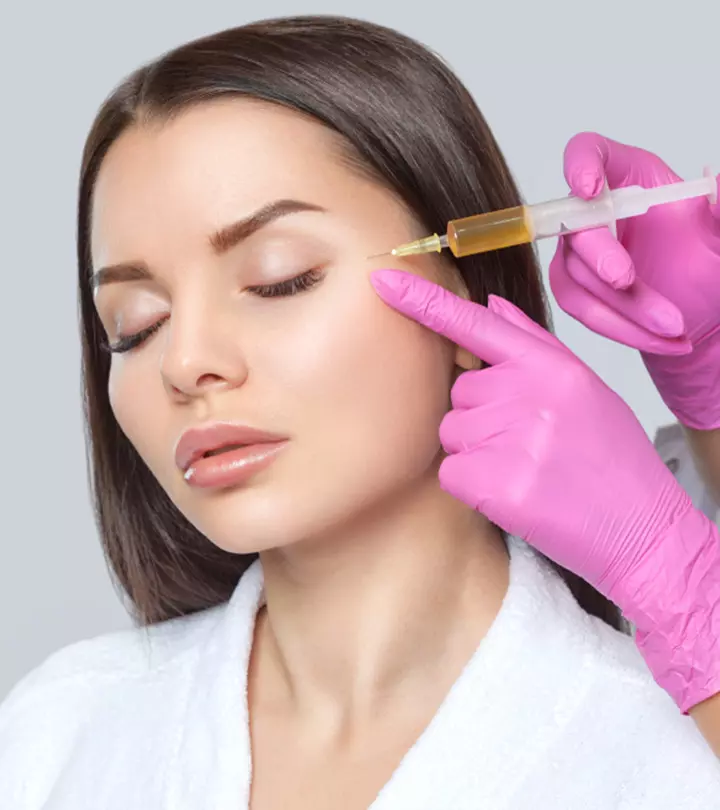
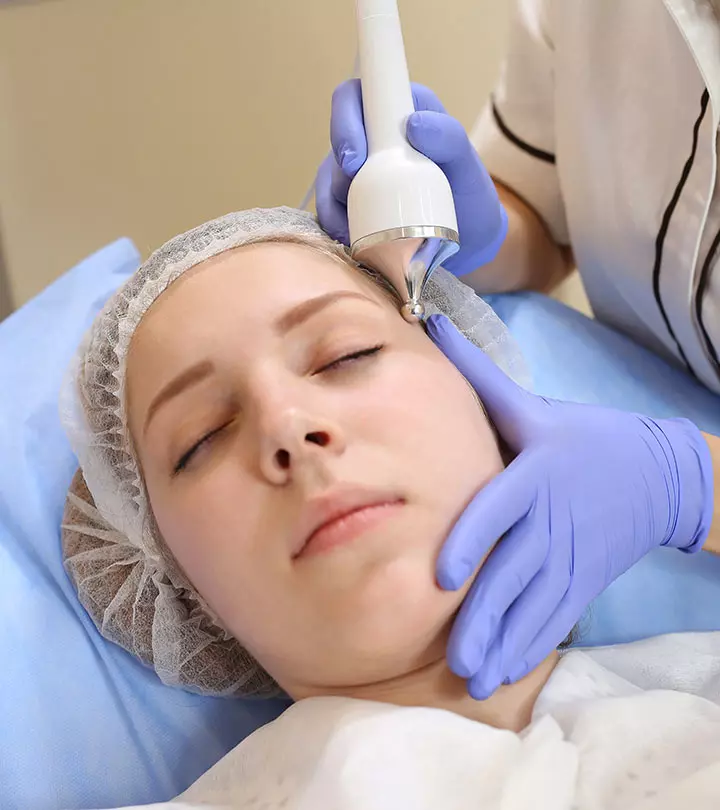


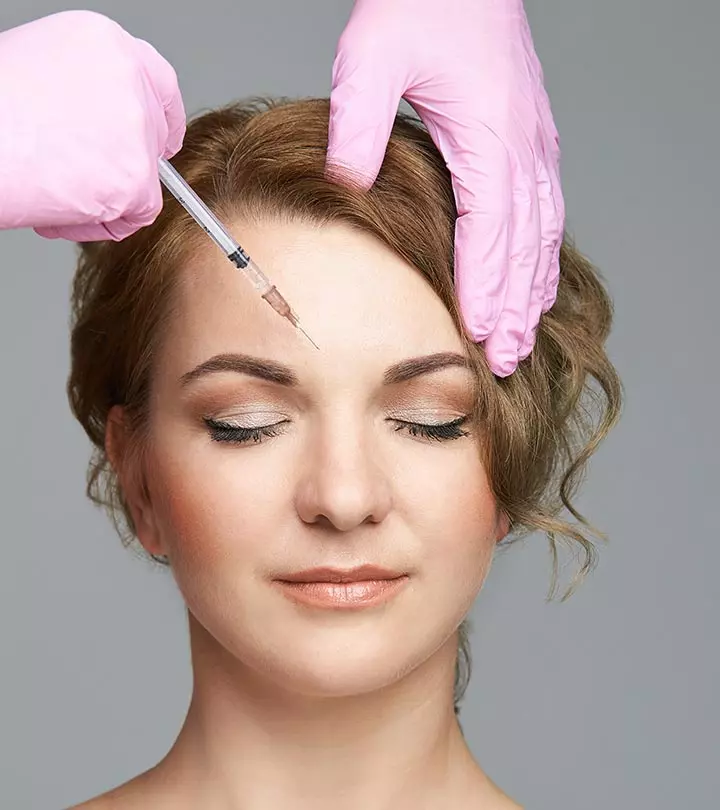
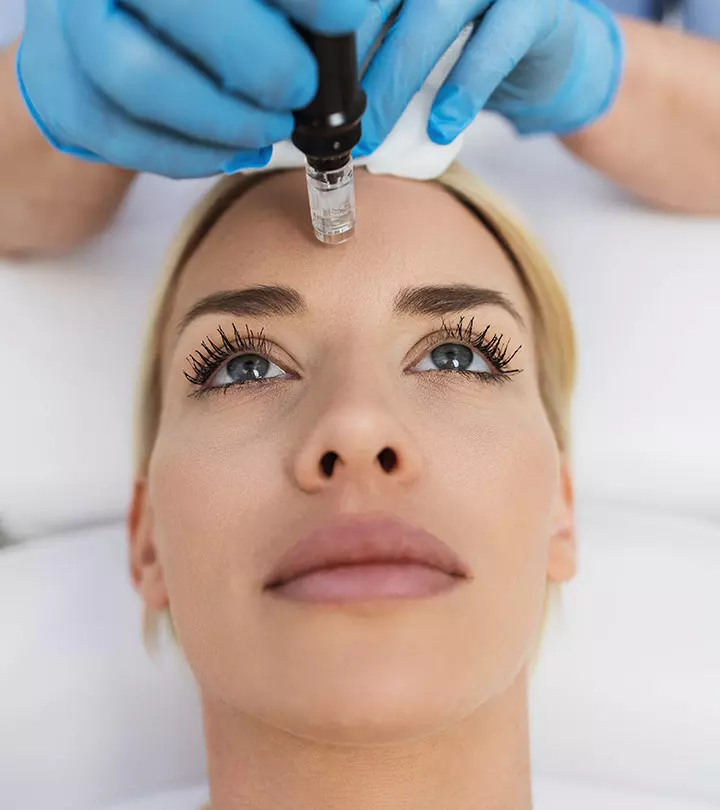
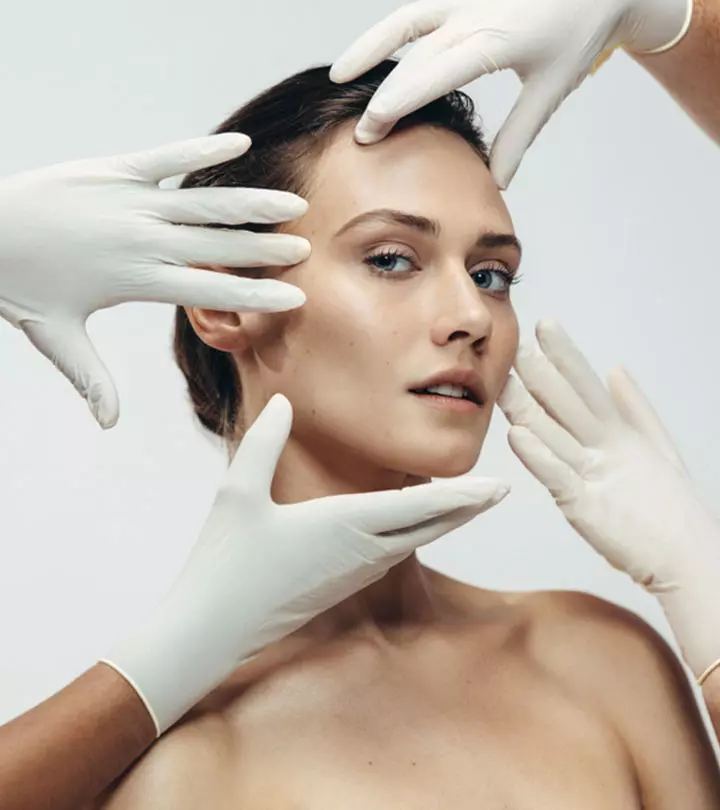
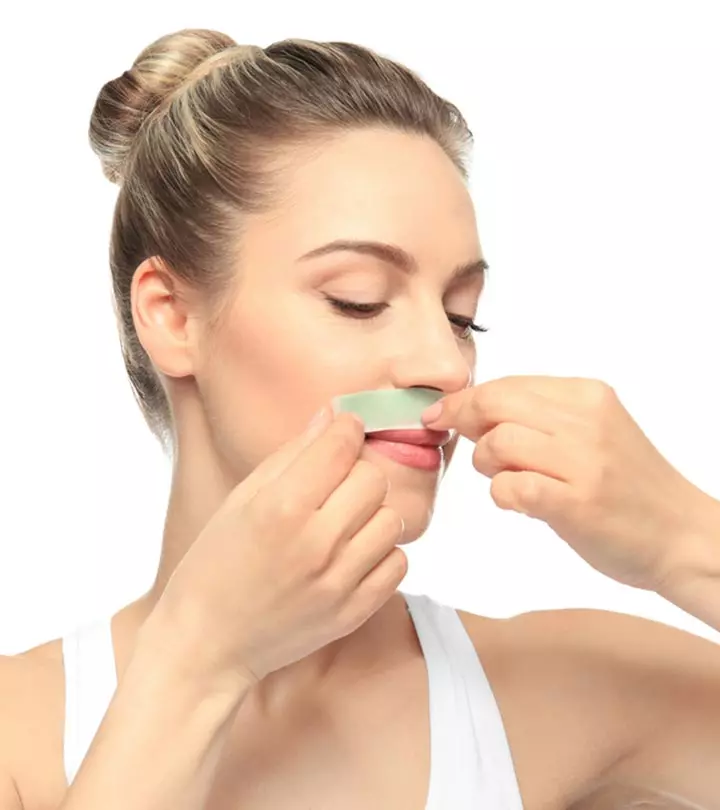
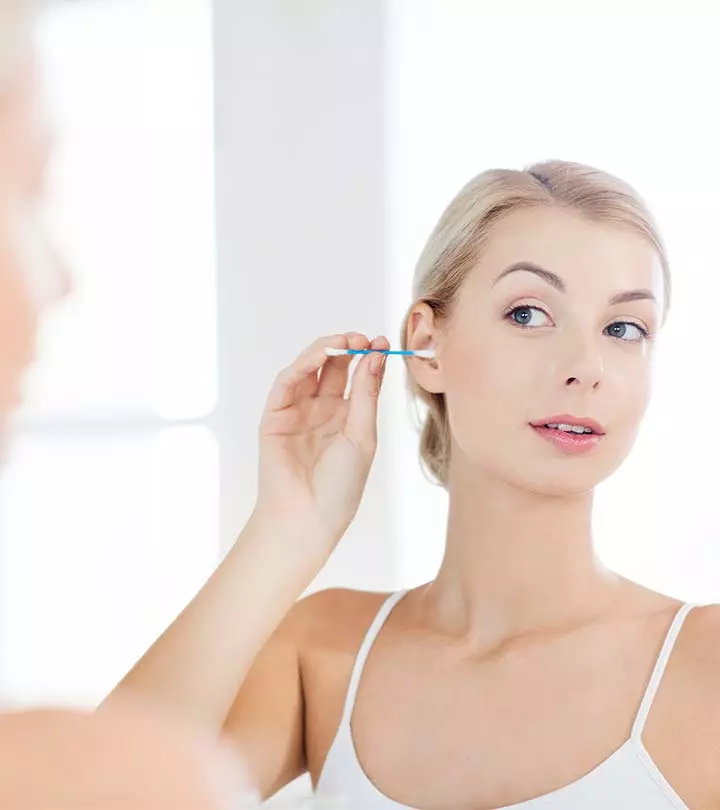






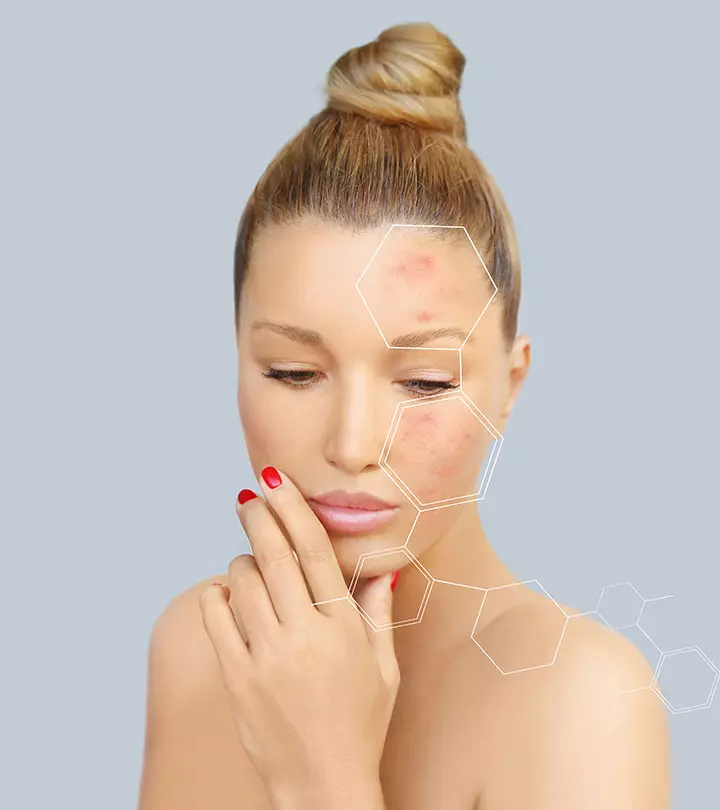
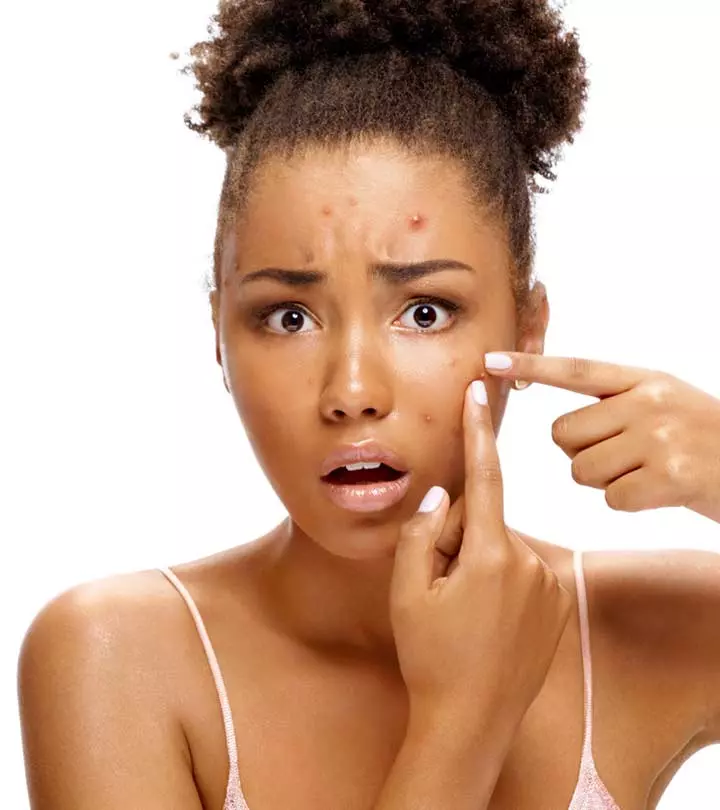


Community Experiences
Join the conversation and become a part of our empowering community! Share your stories, experiences, and insights to connect with other beauty, lifestyle, and health enthusiasts.